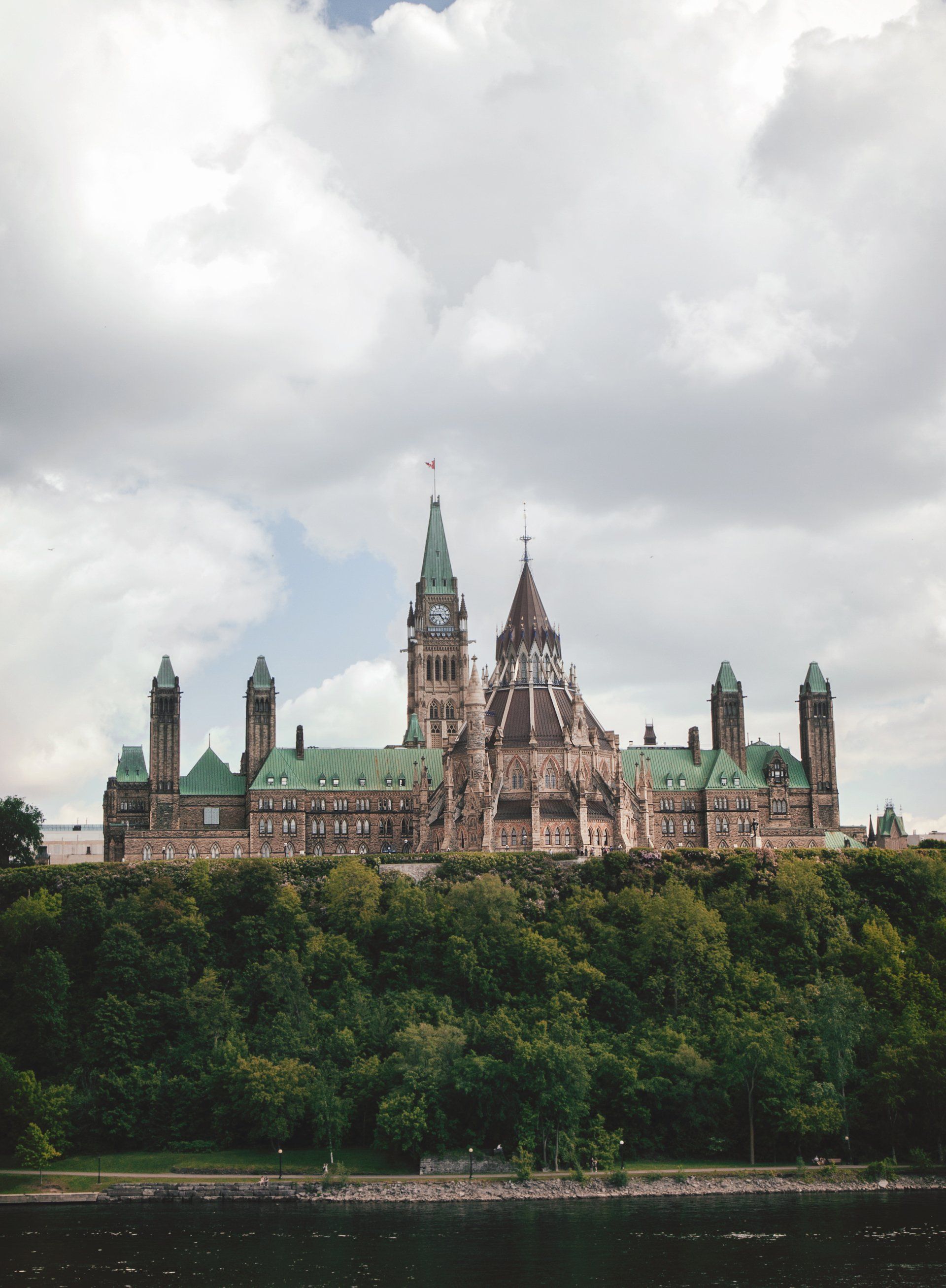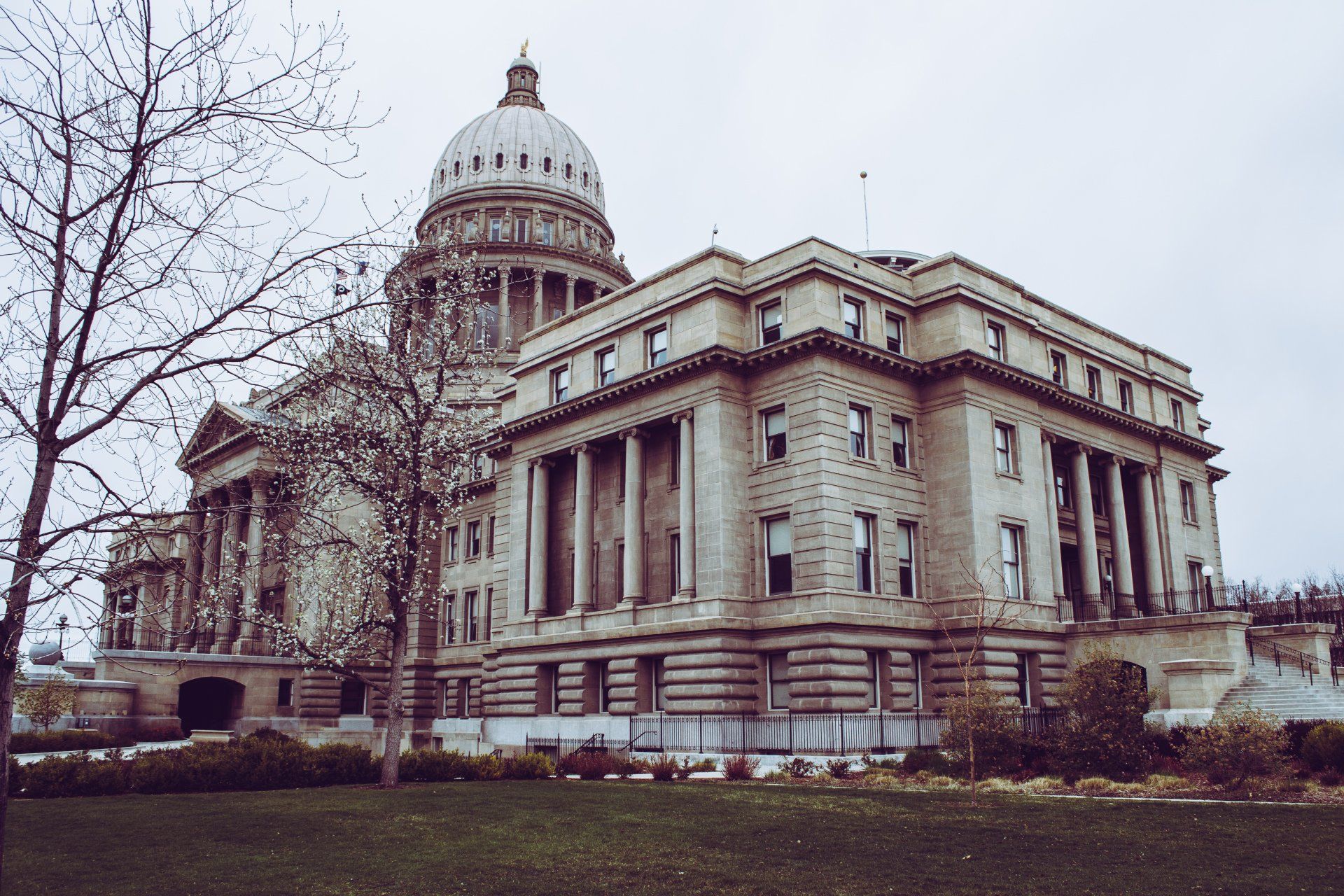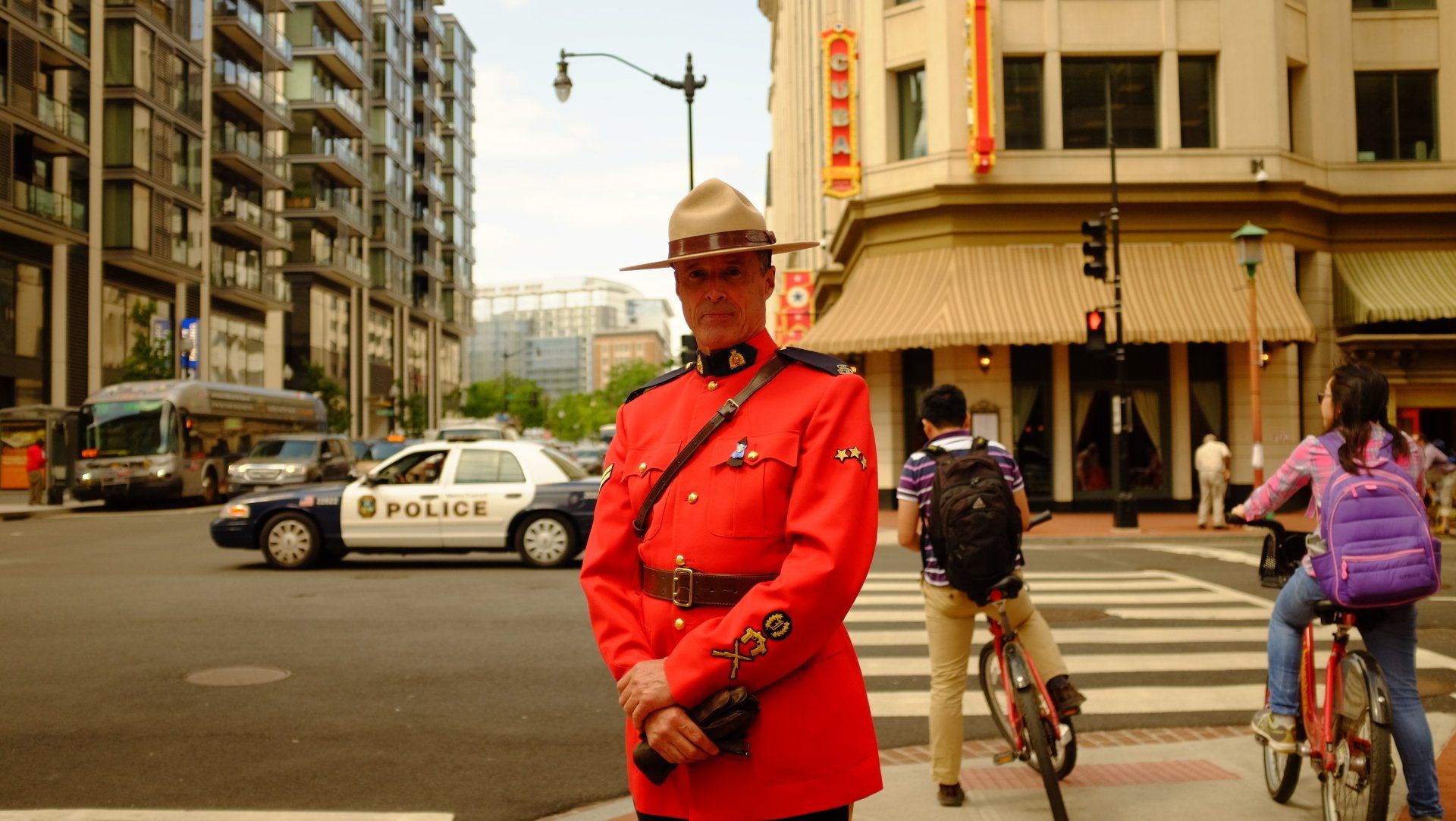We encourage you to look at trending news stories from a different perspective; to dissect the information you're being given and to form your own thoughts and opinions. We deep dive into information from all different sides, free from bias. This is a place to look at the story, and think of the 180.
What's New?

Context A CBC News article discussed the possibility of the Canadian economy heading into a recession, or whether the country has already passed that threshold. The article discussed this possibility based on slowed growth, high inflation, and the Bank of Canada’s continued interest rate hikes. Analysis A recession is a significant reduction in economic activity that occurs over a length of time, usually months or years. One of the most accepted definitions of a recession comes from the economist Julius Shiskin in 1974, who identified the threshold to an economic recession as two consecutive quarters of declining GDP, although economists often argue about the comprehensiveness of this measure. The causes of a recession can be quite complicated and have many contributing factors. Some common examples include a sudden economic shock such as the recent COVID-19 pandemic, excessive debt, asset bubbles, inflation, deflation, or large technological changes. One major factor influencing the probability of an economic recession includes rising interest rates from the Bank of Canada, which has implemented the highest hike in the shortest amount of time in all of the bank’s history, raising the rate over eight times since 2022. The Bank of Canada increased interest rates in order to curb inflation since rising interest rates discourage taking on debt and spending. This further encourages companies to lower prices or slow inflation to increase demand. Currently, the Bank of Canada is keeping at the 5.0 percent rate but has said that further hikes are not off the table as inflation may continue to exceed acceptable rates. Increases in interest rates can certainly contribute to or precede a recession. In fact, the Bank of Canada has raised interest rates three times to slow inflation since the 1960s and all three times this action led to an economic recession. Current fears of a looming economic depression are also not unique to Canada, as following the COVID-19 pandemic, the global inflation rate increased to 8.73 percent in 2021. This was due to supply chain issues, as well as the effect of the Russia-Ukraine War creating rising food and energy prices, as well as general fiscal instability. A majority of the World Economic Forum’s lead economists agreed earlier this year that we could see the beginning of a global recession starting in 2023, which would certainly affect the Canadian economy. The article also discusses the Canadian economy’s slowed economic growth, as the GDP has stagnated in the second quarter of this year. However, it suggests other factors may explain the decrease, including striking port workers in British Columbia, and the resulting negative effect on economic activity. An RBC report mentions how on a per-person GDP basis, there has already been a decline for four straight quarters despite a surge in population growth, and concludes overall predictions for GDP growth do not look promising despite local factors including Canadian wildfires and strikes. They also point to a 0.5 percent increase in the unemployment rate over the past few months, which has historically tended to indicate a looming recession.

Context The City of Ottawa Mayor, Mark Sutcliff released a statement about a revised plan for the redevelopment of Lansdowne, an urban public park containing historic landmarks and commercial venues. The project includes the demolition of a sports arena complex, stadium stands, and the building of a new event center, residential units, and retail space. Despite suggesting the new plan has addressed the concerns of residents, many issues remain. Analysis The City of Ottawa and the Ottawa Sports and Entertainment Group (OSEG) have been in partnership to develop Lansdowne since 2012 and finished an original redevelopment of the park back in 2014. A few years later in 2019, the financial sustainability of the park came to the city council’s attention, and in 2020 the partnership was extended another 10 years with direction to develop a new plan to revitalize Lansdowne. Consultation with community members started in 2020, with the original concept released last year in 2022, and a revised version released this month. Community feedback was acquired through various platforms including public information sessions, an open email for feedback, and public surveys. A summary report of that feedback was published on October 6th, which highlighted the six most common themes of community residents’ concerns. The first concern was related to the size and number of the multiple high-rise apartments which were designed to exceed 30 floors. In the new plan , they have removed one of the three planned buildings, with fewer total units in each, and only one tower with the potential to be built at 40 stories. Residents were also concerned about the loss of greenspace due to the new event center construction. Many people suggested they wanted that greenspace allocated elsewhere, or alternatively, an accessible greenspace roof on the event center. Although in the original plan the city had conceptualized a greenspace rooftop on the event center, this was scrapped in the new plan as it was deemed too expensive to maintain. Respondents wanted a restriction of vehicles to the premises to promote pedestrian safety, a concern that has existed since Lansdowne was first renovated back in 2014. They also wanted more public transportation infrastructure to and from the park, whether that is the local city buses, trains, or cycling infrastructure to reduce congestion on connecting roads. Relatedly, residents also desired more accessible public use space from washrooms to water fountains to usable and free space for people to occupy. The new plan has reduced the number of parking spaces for the residential buildings to meet the Bylaw limit of 0.4 spaces per unit, down from 739 to 336 spaces, while they added 36 new spaces for the event center. In terms of accessible public space, the new plan includes 27,000 square feet of space originally earmarked for the third residential building, now available for an unspecified “public realm.” Residents also wanted more local and less corporate or big-box businesses, to reflect the unique local community better. The new plan does suggest the amount of retail space has been reduced from 108,000 square feet to 49,000 square feet but does not directly address the desire to attract smaller, local businesses. Finally, there was also a concern about financial transparency of how the project is being funded and the resulting impact on the City. The Federation of Citizens Association (FCA) which represents over 70 community groups voted unanimously to oppose the new plan, which comes with a very costly price tag of $419 million, increased from $332 million of the first plan. They cite that the debt comes at a time when the transit system is facing major issues, and the city is struggling with a housing affordability crisis.

Context Newly elected Premier of Alberta Danielle Smith has defended her cabinet which is coming under fire over conflict-of-interest concerns. Environment and Protected Areas Minister Rebecca Schulz’s husband, Cole Schulz , may be lobbying the government in the areas that the Minister works in. Cole Schulz's firm is working on removing the protection of a threatened caribou range to make room for the oil and gas industry – which has raised concerns over who has Minister Schulz’s ear. Analysis The company that Cole Schulz is a partner with, Garrison Strategies, was hired by the Explorers and Producers Association of Canada and is working to influence the government on the issuing of reclamation certificates for oil and gas sites. The lobbyists are working to gain more access to protected caribou habitats to expand the oil and gas industry. They are hoping to “ address the moratorium on tenure in caribou regions ” which would effectively give them better access to land and investments. The Little Smoky and A La Peche herds in northwest Alberta were protected by a moratorium in 2013 which stopped the granting of new energy leases in this area. At the time, 95 percent of the herd’s range was heavily damaged. Phillip Meintzer of the Alberta Wilderness Association found that though records show that Garrison didn’t contact Environment and Protected Areas directly, the firm’s causes are “ too close for comfort ”. Meintzer also notes that as Garrison works on opening the protected caribou land for Alberta Energy, Environment and Protected Areas should be working on a protection plan for the federally and provincially designated threatened animal . Minister Schulz is working closely with the ethics commissioner, however, Danielle Smith confirmed that “ the ethics commissioner has looked at it, given guidance and there’s no violation [of the Conflicts of Interest Act]”. Cole Schulz also indicated that his firm wasn’t aware that Minister Schulz breached the Act at any time. Meintzer suggests that this situation “ calls for a further look ” from a third party. Sources https://globalnews.ca/news/9988998/alberta-premier-danielle-smith-rebecca-schulz/

Context A CBC article reported on a claim made by a human rights lawyer who suggested that the RCMP is undermining the rights of their employees by exploiting a clause in the Canadian Human Rights Act. The Human Rights Act is legislation intended to protect Canadians from discrimination by federally regulated service providers or employers in Canada when that discrimination occurs on a prohibited ground of discrimination. This includes social categories such as race, religion, sex, or disability. The complaint must also occur through discriminatory practices, such as denying someone goods and services, unfair treatment in the workplace, or harassment in the workplace. Analysis The Human Rights Commission is responsible for administering the law, receives complaints from individuals, and assesses those complaints to see if they fall under the commission’s purview. The Human Rights Commission states that employers should make their employees aware that they have the right to access the commission to redress their concerns if they so wish to do so. However, the Human Rights Act contains the requirement that if an internal grievance process is available in a workplace, the complainant must pursue that process first before filing with the commission. Only if the issue remains unresolved after pursuing the internal process would the commission consider their claim. They suggest : “If you have access to another process, you should try to deal with your complaint through that process …The Commission will usually require you to exhaust the other process available to you before you can return to the Commission.” The RCMP has been in the spotlight for human rights abuses several times in the recent past. The Independent Centre for Harassment Resolution (ICHR) was developed by the Liberal government for complainants of the RCMP in 2021, after a sexual assault scandal that resulted in a class action lawsuit and $125 million paid out to over 2000 women who faced sexual assault or harassment on the job. This was only one of several class-action lawsuits related to sexual harassment and assault that have been filed against the organization. Another issue with the ICHR is that critics claim it is not entirely independent from the RCMP since it reports back to the RCMP after it does its investigation. Another compounding issue is that the ICHR has had longstanding issues with meeting resolution timelines since its creation two years ago. The ICHR aims to complete grievance processes within a year of initiation but has been consistently over-logged with complaints. The Human Rights Act requires that the accusations of sexual harassment happen promptly . The RCMP was considering using internal investigators to handle the backlog of complaints once it started to be overwhelmed. This was criticized by the RCMP union since the point of having an independent organization is to have external independent investigations. Given the lengthy internal review process that is available for officers who wish to file a complaint, it is unclear whether the organization meets the requirement for a prompt resolution.

Context An article by the Guardian reported a new Airbnb ban in the city of New York, significantly restricting the company’s activities and potentially setting a precedent for other cities to follow. New York’s Local Law 18 , the Short-term Rental Registration Law, started implementation in September of this year. The law is intended to force short-term rental companies like Airbnb to only process transactions for buildings that are registered with the city government and ensure that those transactions have been checked through the city’s verification system. Critically, only the primary dwelling of the host can be rented out, there can only be a max of two guests at a time, and the host must be present while the unit is being rented out. Analysis It does certainly seem like this is a de-facto ban for Airbnb, as the majority of Airbnb rentals in New York are full homes that have been purposed for Airbnb rentals. Although Airbnb started as a model for individuals to make extra cash renting out their apartments or homes while they are on vacation, many listings now are run by large property managers. In New York, over 55 percent of listings are entire homes or apartments, and 49 percent of listings were offered by hosts with multiple listings. Similar laws have been implemented in some Canadian cities. Quebec is one Canadian province which has taken steps to restrict Airbnb by requiring licenses for short-term rental units. However, while it was already illegal to rent out short-term units without a license from the municipality, Airbnb did not vet any of the units through their platform. In early 2023, a fire broke out in old Quebec City in a heritage house within which several units were being rented illegally as Airbnb’s. The fire killed seven people, prompting Airbnb to commit to vetting transactions. Approximately half of all Airbnb listings were removed from the site that did not have a registration number, however, some hosts attempted to circumvent that process by entering false numbers. Airbnb, when questioned about the continued illegal activity, suggested it is not their responsibility to enforce the province’s law. The article suggests that there is an increasing opinion that the growth of Airbnb is a contributing factor to the inflation of rental prices across the globe. This point does seem to be supported by research. For example, a Harvard Business Review study found that the development of Airbnb in America contributes to about one-fifth of the growth in average rental prices. They suggest that this is partially due to the profitability of short-term rentals that can incentivize owners to take potential long-term rentals off the market. Over time, this can drive up prices of rentals as the market shrinks. In Canada, the financialization of housing does also seem to contribute to the housing crisis. According to Statistics Canada, the share of short-term rental units is growing . Short-term rentals make up 15.2 percent of the total revenue generated from the Canadian accommodation services market, more than doubled from 7 percent in 2017. A study done on Airbnb rentals in Canada also found that more than 50 percent of all revenue was acquired by businesses with multiple listings. If countries do recognize short-term rentals as a significant factor in addressing the housing crisis, restricting Airbnb’s activities could become a viable legislative option. Another way that Airbnb is upsetting some rental markets is by acting as a “shadow market” for longer-term rentals. Instead of signing a standard lease, tenants are signing a legal agreement written by the Airbnb company, for rental agreements longer than 30 days. Toronto , for example, initiated legislation in 2021 that restricted the use of short-term rentals in the city offered for 28 days or less to the host’s primary residence only. Since the implementation of the new law, more than 75 percent of Airbnb’s shifted to monthly rentals of over 28 days. It is uncertain if a similar shift in focus will happen in New York as Airbnb tries to survive.

Context The Montreal Gazette has reported on a story about a young woman who was denied service in English for a driving exam at an SAAQ (Société de l'assurance automobile du Québec) in Quebec. The SAAQ employee cited Bill 96 as requiring them to service her in French, despite the woman’s claims of eligibility for service in English. Analysis Quebec’s Bill 96 requires all communications by civil servants to be in French, given some noted exceptions. The bill also restricts enrolment into English schools and restricts the use of English in the legal system. Newer immigrants are also required to be able to speak French to their service providers within six months of locating to Quebec, lest they lose access to those services. This law is largely unprecedented as most laws have focused on French language rights, where this law works to prevent people from speaking English in interactions with government institutions - even if those public servants can speak English. A history of systemic discrimination in Canada towards French Canadians has characterized Franco-Canadian politics up to this day. For example, French Canadians in the 19th and 20th centuries were discriminated against in the workplace, receiving lower wages than their English coworkers. In some provinces, French was banned in schools, and systemic underfunding of French Catholic schools made it harder for French Canadians to get a good education. Quebec language laws are also shaped by the importance of the French language to the sense of French-Canadian identity. A recent study found that 91 percent of French Canadians viewed their language as a strong central component of their identity, over their sense of belonging to Canada, and for those living in Quebec, stronger than the attachment to their province. The rationale for the passing of Bill 96 was the perception that the French language is under threat by the growing use of English in Quebec. The proportion of people who speak French at home predominantly has decreased since the 90s, however , the real number (total number) of those households has risen. The number of people who speak both English and French has also been increasing in Quebec as well. The article reported that the minister of language Jean-François Roberge assured English-speaking Quebecers that those with “acquired rights” (those eligible for English school) would not face any barriers in demonstrating they require services in English. There are, however, many more English speakers in Quebec who do not have a schooling certificate and who would not fall under this exception. He also suggested that civil servants would accept self-identification of English speakers and not request any proof of qualification. Other exceptions include Indigenous and Inuit people, landed immigrants for a grace period of six months, and those living outside of the province. The way the bill would be implemented relies on the new state language policy which outlines that “…the administration must never systematically make use of another language. Institutional bilingualism is incompatible with the Charter of the French Language.” Critics have pointed to issues with the vagueness of the law, and the seeming contradiction of mandating mono-linguicism while also attempting to ensure the rights of English speakers who have their roots in Quebec. In the case of the young woman who was denied English service despite attesting to eligibility, the civil servants likely overstepped their authority. It is unclear, however, whether the government will continue to accept self-identification in the future as this is not ensured by legislation and has only been communicated by the language minister.

Context A CBC News article reported that the majority of drug users in Canada who are dying from overdose are inhaling their drugs as opposed to injection. They quote advocates who claim that safe injection sites have worked, and who suggest that model should be expanded to include users who inhale. Opponents instead insist that there should be a focus on getting drug users access to treatment. Analysis There is a lot of evidence that safe injection sites work to prevent drug use harm. Safe injection sites have been implemented in Europe, Canada, and Australia with significant results in reducing mortality . It is reasonable to suggest expanding the safe injection site model to accommodate users who inhale their drugs could prevent further deaths, especially since the majority of drug users in several Canadian provinces now primarily smoke their drugs. Alberta Premier Danielle Smith has mandated Dan Williams, the minister of mental health and addiction to implement a future “compassionate intervention” legislation, which would allow family members or social workers to petition a Judge to send a user to treatment without their consent. She also instructed him to help deliver platform commitments including: “Building and operationalizing at least 11 new recovery communities in key locations throughout the province…” In the above article, Dan Williams is quoted as saying that he has no plans to focus on safe injection sites or to consider safe inhalation sites but instead on access to treatment and what he called “recovery communities”. According to the Albertan government, recovery or therapeutic communities are “a form of long-term residential addiction treatment that focuses on the whole person and overall lifestyle changes.” This strategy is focused on access to recovery programs of sobriety and does not consider mitigating overdose deaths directly. The UCP government has also been closing safe injection sites around the province of Alberta. Alberta Premier Danielle Smith has suggested in the past that safe injection sites promote drug use and increase crime, and so work against efforts to get people into treatment. However, there has been no relationship to increased crime found when safe injection sites are implemented in communities. There is also no evidence from studies that have shown an increase in drug use after implementing safe injection sites. There is also no evidence that they discourage drug use, although that’s not their intent. Harm reduction methods including safe injection sites aim not to address the issue of addiction per se, but to mitigate risks associated with drug use such as the risk of death from overdose, leaving strategies for treatment and prevention as separate issues. However, there is also evidence that providing safe injection sites leads to increased engagement with existing treatment programs.

Context The National Post reported on the Liberal Government’s announcement of changes that are coming for the Competition Act, in order to address the affordability crisis in Canada. The proposed amendments would enable the Competition Bureau to assess market conditions more accurately by collecting information from private companies to run studies. Analysis The Competition Bureau is a federally regulated law enforcement agency that is tasked with the enforcement of the Competition Act , a set of laws regulating competition within the Canadian market. The Competition Act specifically aims to ensure that small and medium businesses have a fair shot at operating in Canada and that consumers can access services and goods at competitive prices. The Act attempts to regulate monopolization and to prevent large mergers which may exert a significant influence over a particular market. Currently, the Bureau relies on those private companies willing to cooperate and offer information to them. The second amendment would remove an “efficiencies defense”, which would allow certain mergers to proceed despite a measured negative effect on competition in the market, the loss of jobs, or consumer choice – if they can demonstrate that the merger would result in cheaper goods and services. However, there is no requirement that those hypothetical efficiencies will be passed to the consumer at cheaper prices. The five biggest grocery chains in Canada make up about 76 percent of the entire grocery market. The Competition Bureau conducted a report published in June of this year in which they noted that in 2022, Loblaws, Sobeys, and Metro raked in $100 billion in sales and earned more than $3.6 billion in profit. The report noted that their high-profit margin is an indication that more competition in the market could be successful in driving down costs. Some of those prominent grocery CEOs were called to the House of Commons early this year and questioned about their inflated grocery prices, which they suggested was partially due to higher supply costs . However, the report contradicts this claim by noting grocery profit margins have been increasing since 2017, despite the Covid-19 crisis and various issues with supply related to the war in Ukraine. The report recommended Canada develop a strategy to encourage smaller grocery stores to capture some of that market and drive prices down, and noted it is becoming increasingly harder in Canada for smaller grocery companies as the larger grocery chains have been gaining more market share over time. The article quotes some critics who claim that amending the Competition Act is not substantial enough to address the affordability of groceries. Enabling the Competition Bureau more oversight in addressing competition is likely a good move to combat the issue of monopolization, although it is unclear how this will address the affordability crisis anytime soon. Creating a more favorable market for smaller groceries to promote lower prices also seems like a long-term strategy. Trudeau has however, also requested that the heads of some of the largest grocery chains including Loblaws, Metro, Sobeys, Costco, and Walmart, create a plan to lower food prices by Thanksgiving this year or face possible consequences – including future taxes if their plan doesn’t result in significant savings. Although the threat of taxation might be more likely to impact prices, it is unclear what measures the government is actually willing to impose on the grocery giants, or to what degree Canadians could see their grocery bills decrease.

Claim “Heather Stefanson and the PCs cut hospital beds, fired 300 nurses, and closed three emergency rooms in Winnipeg,” said Uzoma Asagwara, NDP Health critic at a press conference at the Manitoba Legislature. “Because of her cuts, our hospitals are overflowing and if Heather Stefanson is re-elected, we know she will cut healthcare again. The people who broke our healthcare system can’t be trusted to fix it.” However, a spokesperson for Shared Health – which provided the information quoted – said the NDP are misinterpreting the numbers . Context The ongoing healthcare system challenges in Manitoba have come to light with a provincial election looming. The current PC government is being challenged by the provincial NDP party with staggering statistics that show just how critical the bed occupancy rates are, on top of the issues of staffing and the number of emergency departments in the province. The PC party was noted to have shut down emergency rooms, cut hospital beds, and fired 300 nurses – which the NDPs expressed will continue to happen if the PC government is re-elected. Analysis The Health Sciences Centre (HSC) Winnipeg has reached critical bed occupancy rates at 107.7 percent in critical care and 103.8 percent in medicine wards in Spring 2023. It’s recommended by medical experts to have occupancy rates of 85 percent. These statistics are only based on the number of licensed beds, which is “ lower than the actual number of beds that are staffed and open ”. The critical care beds, for example, total 104 across the province and have had midnight census patients ranging from the high 70s to mid-90s from December 2022 to May 2023. To combat the worsening healthcare crisis in Manitoba, the NDP has pledged to invest $500 million in recruitment and retention – on top of building three new emergency departments in Manitoba and a new emergency room in Eriksdale. This counters the PC government downgrading emergency departments at the Victoria Seven Oaks and Concordia hospitals in 2017. The NDP investment should also add 300 nurses back into the system, in addition to 400 physicians and other healthcare workers. The PC party says that the NDP voted against their $400 million plan to train and recruit 2,000 healthcare professionals – but staffing is only one issue that’s accelerating the healthcare crisis. The need for beds is critical to alleviating the stress from the medicine and critical care wards in the emergency departments. On top of that, additional emergency rooms would provide more intensive care units . Healthcare is being strained across the country, with labour shortages being a pinch point. Bed shortages and occupancy levels are also major stressors. In Ontario, half of the intensive care units were at capacity or had one or two beds available in 2021. Similar to Manitoba, the Ontario PC government cut funding and 1,100 beds in 2017. Based on comparisons with other developed countries, Canada ranks 25th when it comes to acute care bed availability but ranks 2nd in healthcare spending as a percent of GDP. Sources Global News Winnipeg Sun CTV News Winnipeg CBC Oha.com Fraser Institute

Context Thierry Breton is the EU’s Digital Commissioner, responsible for enforcing the EU’s Digital Services Act (DSA). The DSA regulates private organizations which provide platforms and hosting services for online content. They also focus on what they call VLOPs or Very Large Online Platforms, due to their relative influence and number of users. The stated purpose of the bill was to attempt to curb the presence of illegal content online. Examples of illegal content include terrorism, child sexual abuse, and hate speech. The bill also includes measures to mitigate against manipulative online design, disinformation, and election manipulation. They also require VLOPs to submit themselves to audits and to conduct risk assessments and subsequent measures to mitigate those risks. Analysis The Act does not define what content is illegal and instead defers to existing laws either at the EU or a local government level. Similarly, the Act does not define what ‘misinformation’ is and suggests it works in tandem with the Code of Practice on Disinformation, which was voluntarily signed by major platforms such as Facebook, Google, Microsoft, and TikTok in which they agreed to self-regulate. The DSA is one piece in a larger regulatory scheme that is transferring the responsibility of determining what content should be permitted online from private tech companies to government bodies. If illegal content such as sexually violent material is accessible on online platforms, it may make sense to ensure that those platforms are moderating that content to create a safer environment for its users. Similarly, if there is information that is falsifiable (disinformation), it could also be argued that creating a safe and healthy online environment could include a process to check that false information. Sources https://ec.europa.eu/commission/presscorner/detail/en/QANDA_20_2348 https://twitter.com/ThierryBreton/status/1673310128865439754 https://digital-strategy.ec.europa.eu/en/library/2022-strengthened-code-practice-disinformation